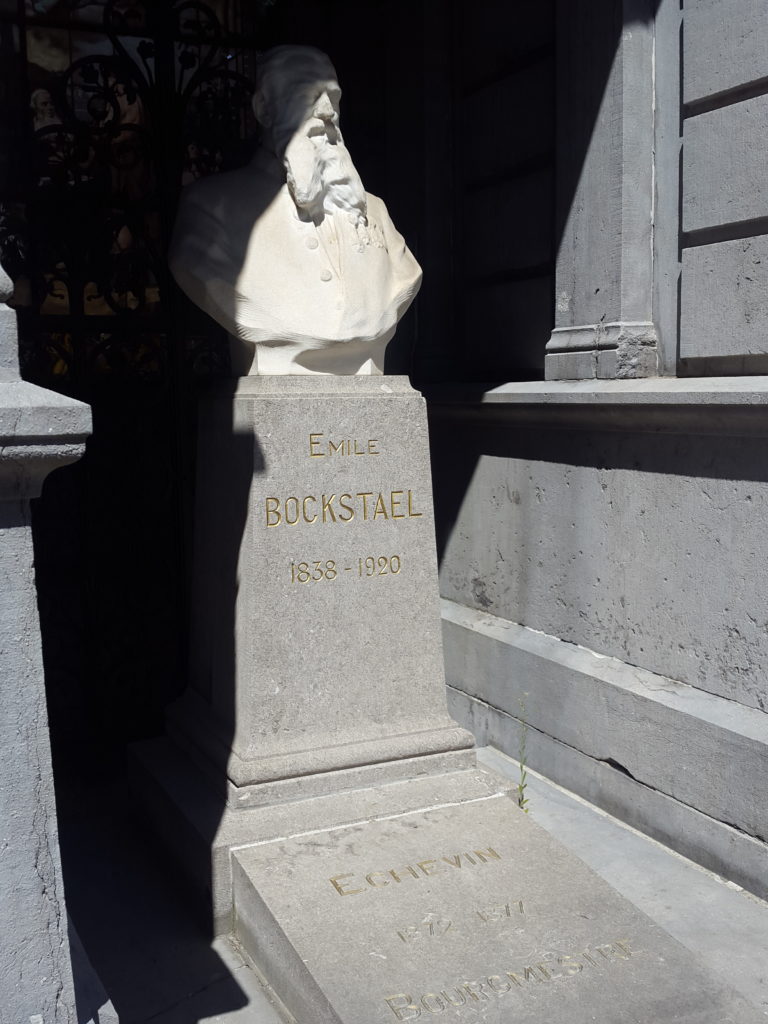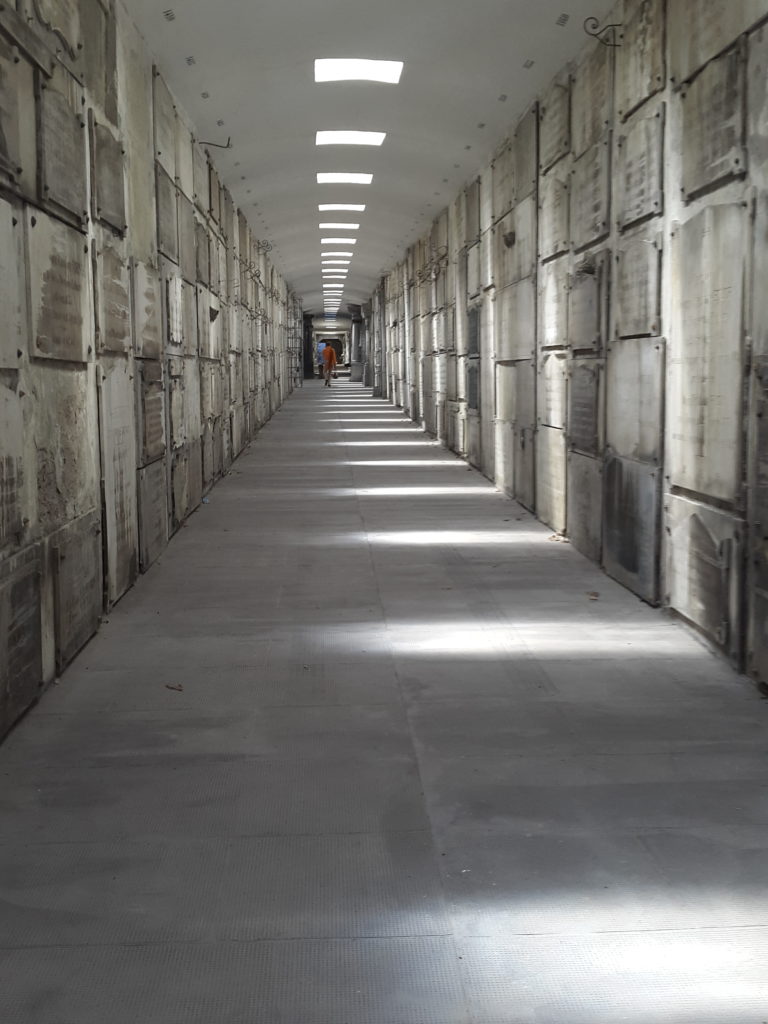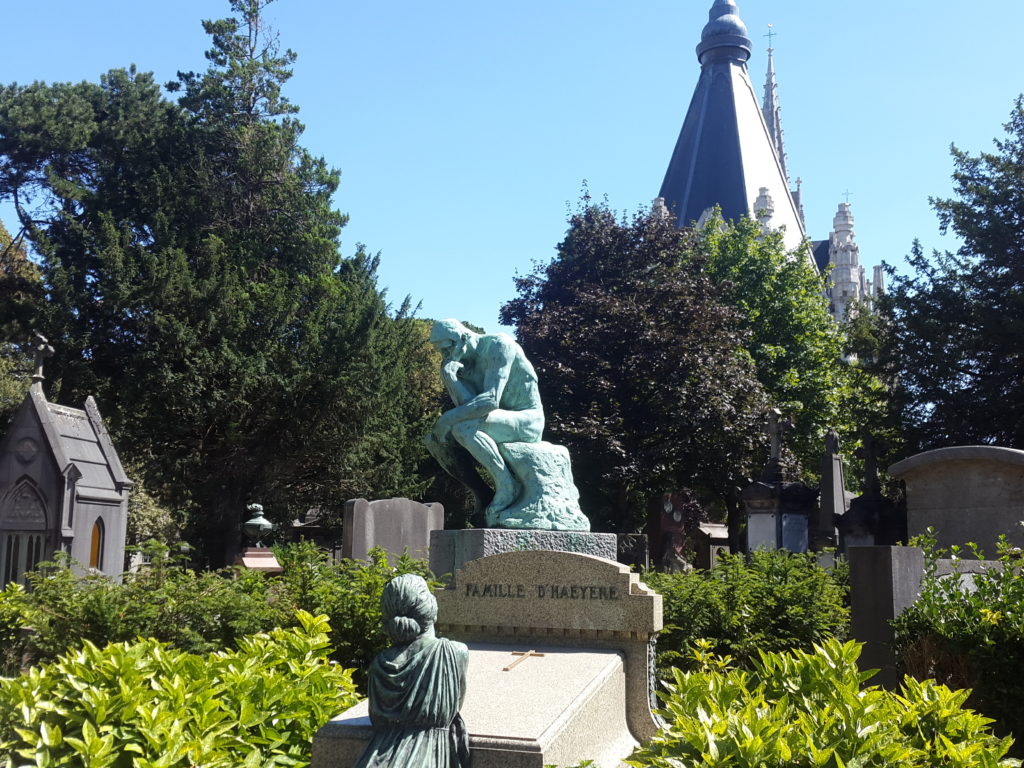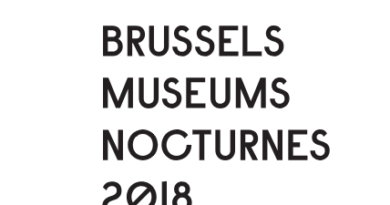The oldest cemetery in Brussels: a guided tour of Laeken cemetery
In 1983 the writer and former New Yorker editor, William Maxwell, wrote a story called Love, in which a ten year old recounts the details of his life in a US rural town, perhaps Lincoln, Illinois, where Maxwell was born. The story deals with several themes such as platonic love, friendship, the loss of innocence, and the inextricable forces of life and death. There are many moving scenes but the one that has always stayed in my mind is the final one, where the narrator recalls how he used to go to the cemetery with his mother to lay flowers on the graves of his grandparents. He notices the names of the families graven in stone, the different ways of expressing affection for the loved ones who are now departed: In loving memory of. Infant daughter of. Beloved wife of.
That particular passage came back to me last Sunday, August 5th at the Laeken cemetery in Brussels, when I joined a group of over 20 people for a guided tour organized by Arkadia ASBL. The sky was clear, the heat intense, and I was surprised to see two children in the group, a boy and a girl of about ten years of age, both completely dressed in white. They stood in the shade with their mother, eager perhaps to visit the cemetery that is known as the “Père Lachaise of Brussels.” I wondered what was going through the minds of those children, what they made of all the graves that lay ahead of us. They were attentive to what our guide, Philippe Bacquet began to say at the entrance of the cemetery.
“This is the oldest cemetery in the Brussels Region,” he said. “The last one also to exist next to the church, Notre Dame de Laeken, where the first Queen of Belgium, Louise-Marie d’Orleans is buried. Her body is in the royal crypt over there.”

In 1784, during the Habsburg period, Emperor Joseph II issued a decree stating the cemeteries could no longer exist next to the church, as they once had. They had to be placed outside of the city for reasons of hygiene. In 1804, during the Napoleonic years, the management of the cemeteries was handed to the municipalities instead of the parishes. Many parcels were granted in perpetuity, mainly to nobles or people of means.
We stop to admire the funerary monument to Emile Bockstael, mayor of Laeken for 43 years. He was the mastermind behind the funerary galleries at both, the Molenbeek-Saint Jean cemetery, and the one in Laeken. There is a street and a metro station named after him.

The next one was the monument dedicated to architect Joseph Poelaert, designer of the Palace of Justice, the Congress Column, the restoration of the Monnaie Opera building, and many more. “Poelaert was very clever,” said Mr. Bacquet. “When the competition for the Palace of Justice took place, Poelaert was in the jury. Of course none of the projects made it to the desk of the Minister of Justice. Poelaert went up to him and said, ‘I want to show you something. This is what I have in mind for the building. I’ve been working on it for ten years.’ And that was all he had to say.”
We then descended to the funerary galleries with their long and empty corridors, the air much cooler, it gives the impression of being in a mortuary chamber where bodies have been led into a cryogenic process. “It took five year to restore these galleries,” said Mr. Bacquet. “There was water infiltration everywhere. It cost 4,5 million Euros to repair all of this.”

Outside again we saw long lines of tombstones, all identical, almost no space in between them. Unknown soldiers from the First World War, is what Mr. Bacquet explained. We walked on for a few minutes, the burnt yellow grass crackling under our feet like eggshells. Tiny red insects scurried away and hid behind rocks.

The tomb of Marie Popelin has the image of a woman on it and an inscription from the Belgian League for Women’s Rights. For a moment we stood watching it while the participants regrouped. “She was the first woman to receive her law diploma in Belgium. In all her right she was a lawyer. But she was never allowed to work as one.” There was silence. “It is an interesting contrast, what has happened in our society,” Mr. Bacquet continued. “Because today there are more female lawyers than male ones.”
Facing the Dreve de St. Anne sits the massive statue by Auguste Rodin, The Thinker. Over time it has become greenish with rust but the spectacular display of craftsmanship knowledge of human anatomy remains intact. After the Franco-Prussian war, Rodin came to Brussels in 1871 and stayed on until 1877. He worked under the tutelage of sculptor Albert Carrier-Belleuse on the decoration of La Bourse, in the center of town, among other projects. “Carrier-Belleuse wasn’t very kind with his student. He forbid him to sign his sculptures. He was probably jealous, but great art always comes to the light.” It was thanks to Josef Dillen, the art historian, who in 1928 made a list with all the pieces that Rodin had sculpted during his stay in Brussels.

Some of the tombs are well cared for, clean and with flowers, others show signs of decay, large sections of moss growing on them like a shadow. Others show the person’s name and the date of birth, but no date of passing away. “These tombs are ready for use,” said Mr. Bacquet. “The family is probably just waiting.” I glanced at the boy and the girl, but they seemed distracted. Perhaps they did not want to know what was being inferred by those words.
The last tomb we stopped to look at was that of Spanish singer, María de la Felicidad García, also known as La Malibran. Her talent was discovered early and she performed in public for the first time at the age of six in Naples. Her father was strict and repressive. To spite him, she married a man by the last name of Malibran, a gambler. Years later she divorced him and married the well known violinist Charles de Beriot. “Have you seen the Municipality building in Ixelles, the one at Fernand Cocq square? Well that’s where they both lived.” The funerary monument shows a statue of La Malibran performing Norma, which was made by Belgian sculptor Joseph Geefs.
A bell rang and we were invited to head back to the exit. “Over there, at the end of this alley, lies the tomb of symbolist painter Fernand Khnopff,” said Mr. Bacquet. “Another reason for you to come back.”



